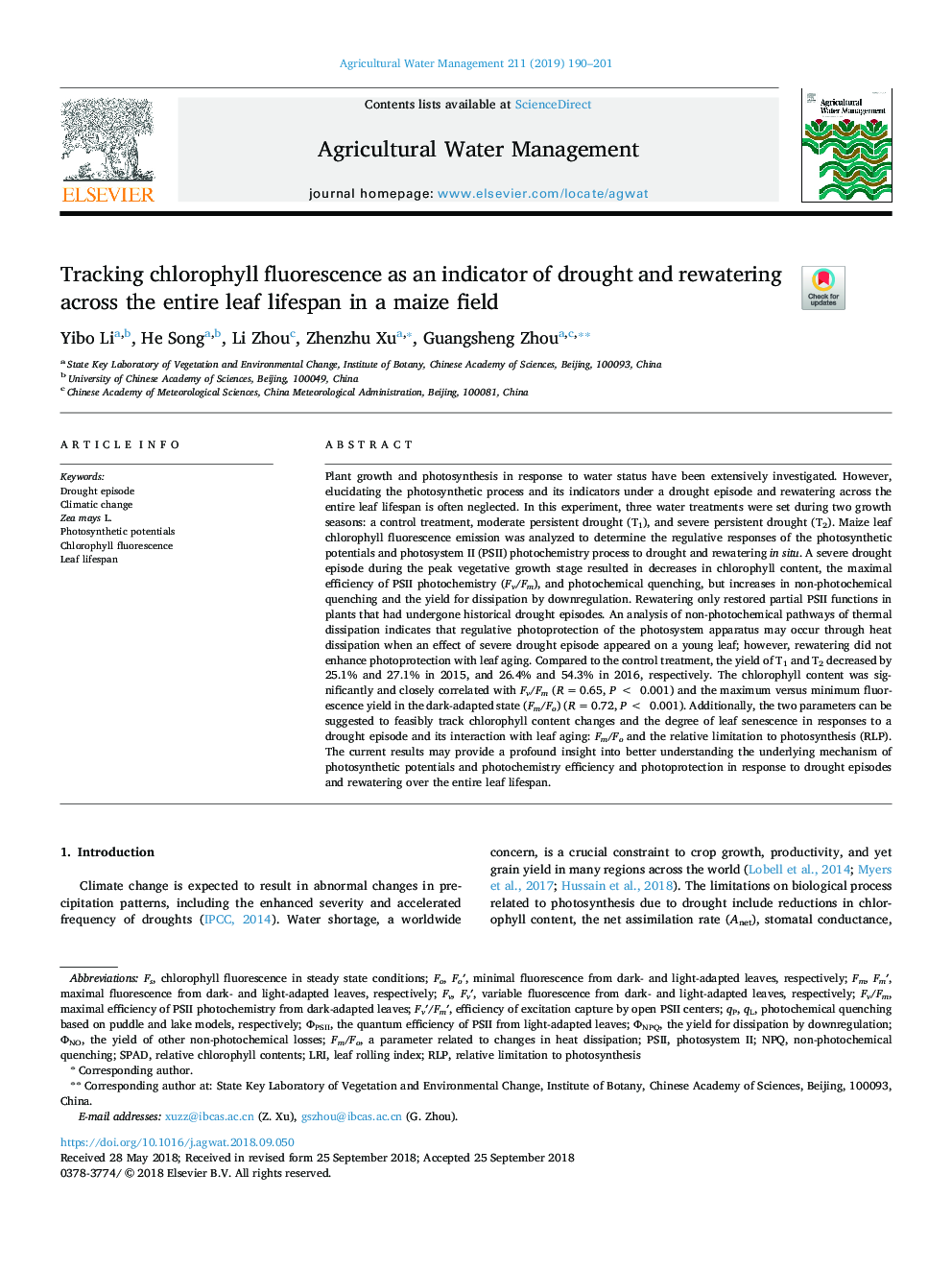| Article ID | Journal | Published Year | Pages | File Type |
|---|---|---|---|---|
| 11021762 | Agricultural Water Management | 2019 | 12 Pages |
Abstract
Plant growth and photosynthesis in response to water status have been extensively investigated. However, elucidating the photosynthetic process and its indicators under a drought episode and rewatering across the entire leaf lifespan is often neglected. In this experiment, three water treatments were set during two growth seasons: a control treatment, moderate persistent drought (T1), and severe persistent drought (T2). Maize leaf chlorophyll fluorescence emission was analyzed to determine the regulative responses of the photosynthetic potentials and photosystem II (PSII) photochemistry process to drought and rewatering in situ. A severe drought episode during the peak vegetative growth stage resulted in decreases in chlorophyll content, the maximal efficiency of PSII photochemistry (Fv/Fm), and photochemical quenching, but increases in non-photochemical quenching and the yield for dissipation by downregulation. Rewatering only restored partial PSII functions in plants that had undergone historical drought episodes. An analysis of non-photochemical pathways of thermal dissipation indicates that regulative photoprotection of the photosystem apparatus may occur through heat dissipation when an effect of severe drought episode appeared on a young leaf; however, rewatering did not enhance photoprotection with leaf aging. Compared to the control treatment, the yield of T1 and T2 decreased by 25.1% and 27.1% in 2015, and 26.4% and 54.3% in 2016, respectively. The chlorophyll content was significantly and closely correlated with Fv/Fm (Râ=â0.65, Pâ<â 0.001) and the maximum versus minimum fluorescence yield in the dark-adapted state (Fm/Fo) (Râ=â0.72, Pâ<â 0.001). Additionally, the two parameters can be suggested to feasibly track chlorophyll content changes and the degree of leaf senescence in responses to a drought episode and its interaction with leaf aging: Fm/Fo and the relative limitation to photosynthesis (RLP). The current results may provide a profound insight into better understanding the underlying mechanism of photosynthetic potentials and photochemistry efficiency and photoprotection in response to drought episodes and rewatering over the entire leaf lifespan.
Keywords
Related Topics
Life Sciences
Agricultural and Biological Sciences
Agronomy and Crop Science
Authors
Yibo Li, He Song, Li Zhou, Zhenzhu Xu, Guangsheng Zhou,
